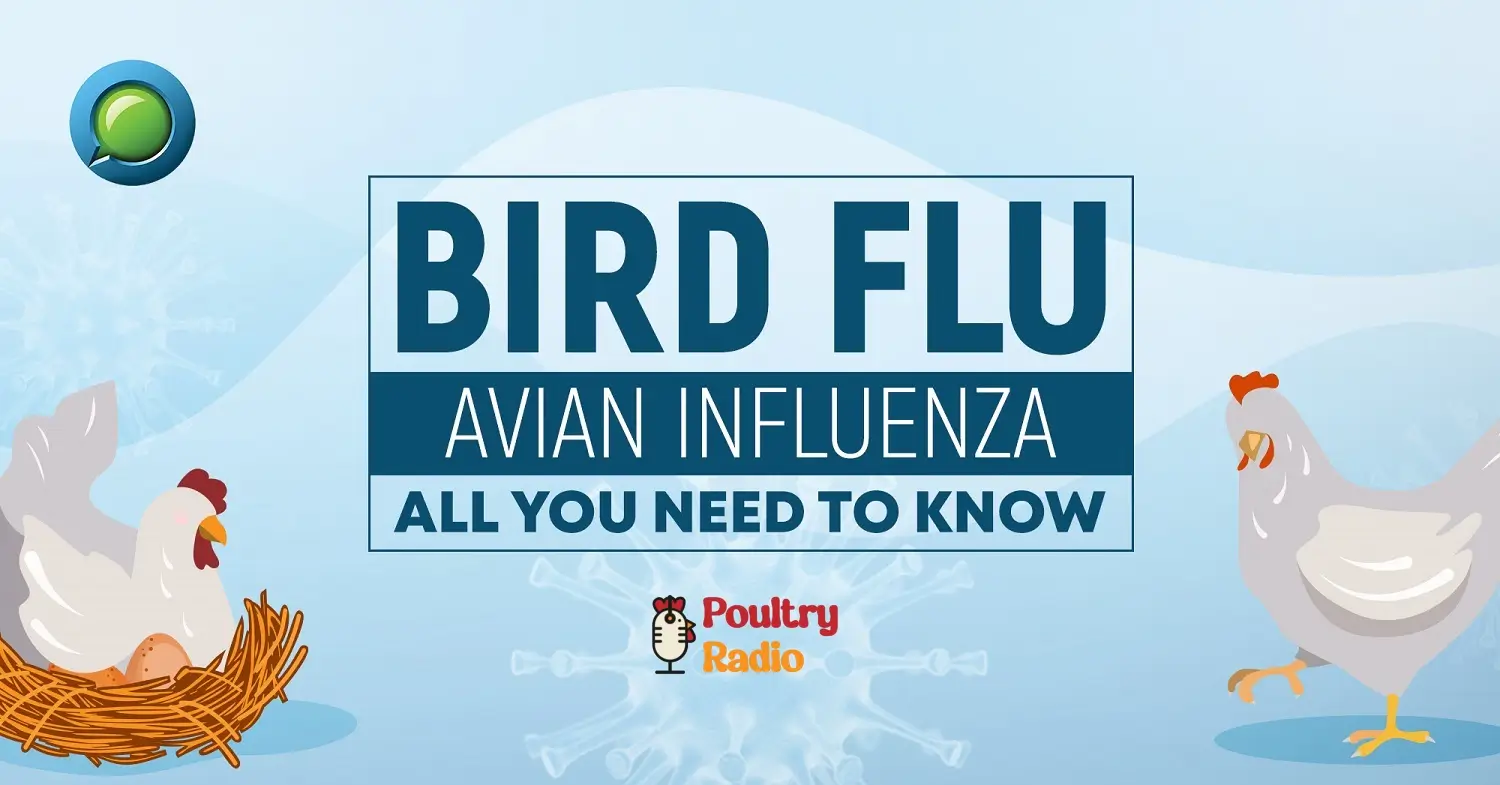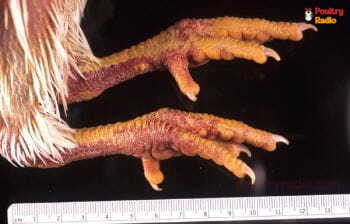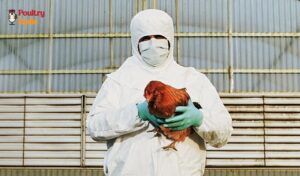Avian Influenza Treatments: Strategies for Prevention and Cure Bird Flu
Avian influenza, also referred to as bird flu, is a virus that mostly affects birds, especially domestic poultry and wild birds. It is an extremely contagious disease, characterized by respiratory signs, depression, and reduced feed and water intake.

Avian influenza is a notifiable disease and should be reported.
Please see the Defra website for advice on how to spot and report the disease.
Influenza Virus
Influenza viruses may seem like an alphabet soup with their complex classification system. They are initially categorized into types A, B, or C. Type A encompasses most human influenzas and is also the sole type found in most domestic animals, including birds.
All influenza A viruses boast two main proteins – hemagglutinin (H) and neuraminidase (N). The hemagglutinin protein comes in 17 varieties, while the neuraminidase protein has 9 varieties. Consequently, influenza A viruses are classified based on their specific H and N types, resulting in the H#N# designation, or subtype. Unlike other animal classes, birds can be infected with all possible combinations of H and N, leading to a total of 153 influenza A subtypes. Most of these viruses don’t make the birds sick, so they’re called “low pathogenic avian influenza” (LPAI) strains.
Some of these “low pathogenic avian influenza” viruses can infect poultry, and within poultry, they have been known to change to become more harmful. So, a “low pathogenic avian influenza” can turn into a “highly pathogenic avian influenza virus” and cause disease.
To this day, all of these highly dangerous viruses have been either of the H5 or H7 subtypes. This means that any H5 or H7 viruses found in birds are considered “notifiable” because of the chance that they could change and become harmful, leading to the death of poultry. Instances of highly pathogenic avian influenza (HPAI) in poultry occur from time to time. Affected poultry will die quickly, often within 48-72 hours of getting infected.
Common Symptoms in Chickens

What are the Lesions?
Low Pathogenic (LPAI)
- Mild or moderate inflammation of the trachea, sinuses, air sacs, and conjunctiva.
- In laying birds might be ovarian atresia and involution of the oviduct.
- Congestive, hemorrhagic, transudative, and necrotic lesions have been described in varying degrees.
High Pathogenic (HPAI)
Chickens with an HPAI infection have the most severe and extensive gross lesions.
- Fibrinous exudates might be seen on the air sacs, oviduct, and pericardial sac.
- Small necrotic foci are seen in the comb, skin, and wattles or the liver, kidney, spleen, or lungs.
- Classic lesions of HPAI are cyanosis, edema of the head, ulceration of the comb, red discoloration of the shanks, and, necrosis or hemorrhage in the ventriculus and proventriculus.
Diagnosis
- Identifying AI viral RNA
- Identifying antibodies specific to AI
- Isolating the AI virus
Please note that clinical signs alone are not enough to diagnose avian influenza.
AI viruses, both LPAI and HPAI, can be easily found in oropharyngeal and cloacal swabs, and in the case of HPAI viruses, they can also be isolated from many internal organs. These viruses thrive in the allantoic sac of 9- to 11-day-old embryonating chicken eggs, and they cause the agglutination of RBCs. Importantly, this hemagglutination is not inhibited by antisera for Newcastle disease virus or other paramyxoviruses.
Differential Diagnosis of Avian Influenza
When diagnosing LPAI, it’s important to distinguish it from other respiratory conditions or reasons for decreased egg production. These can include:
- Viral diseases: These may present as acute to subacute and include infectious bronchitis, infectious laryngotracheitis, low virulent Newcastle disease, and infections by other paramyxoviruses.
- Bacterial diseases: This category encompasses mycoplasmosis, infectious coryza, ornithobacteriosis, turkey coryza, and the respiratory form of fowl cholera.
- Fungal diseases: Aspergillosis is an example of a fungal disease to consider.
Similarly, when differentiating HPAI, it’s important to consider other potential causes of high mortality rates, such as virulent Newcastle disease, the peracute septicemic form of fowl cholera, heat exhaustion, and severe water deprivation.

Avian Influenza Treatments and Control:
- In areas where AI has been a threat, routine serologic monitoring of blood or egg yolk antibodies is used.
- To stop the introduction and spread of the virus on poultry farms, strict biosecurity measures must be put in place.
- For people to take the necessary action, outbreaks must be reported to industry professionals who have direct or indirect contact with poultry.
- Owners must voluntarily isolate affected flocks in order to stop the spread of the disease to other flocks.
- To ensure there is no active AI virus on the farm before another flock is set up, flocks must be rescheduled.
- There is no proper treatment for avian influenza however, vaccination is a way that might be used to help bring the infection under control. Vaccines against H5, H7, and H9 (strains of avian influenza) are available in the market.
- Only supportive therapy can be used in case of low pathogenic avian influenza like bronchodilators, anti-piratic drugs, and multivitamins. Broad-spectrum antibiotics are used to treat any kind of secondary infections.
Is avian influenza zoonotic?
Avian influenza has a zoonotic potential, which means it can be transmitted from birds to humans. In 1997, the global community took significant notice when an H5N1 virus was discovered in a sick boy in Hong Kong.
It was particularly noteworthy as H5 subtypes are typically associated with birds and not known to infect humans. Subsequently, a strain of this virus, or a closely related one, spread through poultry across Asia, much of Africa, and eventually Europe. The outbreak resulted in over 600 human infections, with a mortality rate of 59%. Most of those affected had either close contact with poultry or were intimate family members of sick individuals.
The illness in humans resembled that in birds, leading to multi-organ system failure, often culminating in the development of acute respiratory distress syndrome and respiratory failure. While H5N1 continues to persist at a minimal level, international efforts have largely contained its spread. It is important to remember that the Americas have never experienced an H5N1 virus outbreak.

Multiple subtypes of avian influenza viruses, including H5N1, have been documented as causing infections in humans. The H7 subtype has been responsible for several human infections and was classified as highly pathogenic avian influenza (HPAI) due to its high virulence in poultry. Additionally, the H9 subtype has sporadically infected humans, causing respiratory issues but no fatalities.
These viruses were of the low pathogenic avian influenza (LPAI) variety. Of current concern is the newly identified LPAI H7N9, which, within just one month of its discovery in China, resulted in 129 human cases with an 18% mortality rate. This specific strain, being LPAI, does not exhibit obvious clinical signs in birds, making it challenging to detect infected birds. Human cases were reported in multiple provinces, with most individuals having had contact with poultry. The number of new cases developed at a slower rate after the live bird markets were closed.
Summary
The visrus has a zoonotic potential, which means it can be transmitted from birds to humans. The specific strain of the avian influenza virus is one of many factors that determine the magnitude of this potential. Some strains of avian influenza have an increased ability to infect humans, while others have little to no capacity to do so.
Commonly Asked Questions
What is the cause of avian influenza?
Avian influenza, also known as bird flu, is the illness resulting from being infected with avian (bird) influenza (flu) Type A viruses. It is an extremely contagious disease, characterized by respiratory signs, depression, and reduced feed and water intake.
Can avian flu spread to humans?
Avian influenza has a zoonotic potential, which means it can be transmitted from birds to humans. The specific strain of the avian influenza virus is one of many factors that determine the magnitude of this potential. Some strains of avian influenza have an increased ability to infect humans, while others have little to no capacity to do so.
What are the main symptoms of avian influenza?
Respiratory signs (coughing, sneezing, nasal discharge)
Depression
Diarrhea
Edema of the head
Edema of the feet
Sudden and high mortality rate (depending upon the virulence of the virus)
Blotchy red discoloration of the shanks
Nervous disorders are also seen
In layers, decreased egg production and quality are seen
What is the difference between avian flu and human flu?
Avian influenza, commonly known as “bird flu,” primarily impacts birds and is not the same as pandemic flu. Pandemic flu, on the other hand, is an infectious disease that affects millions of people worldwide. but few forms of avian influenza has a zoonotic potential, which means it can be transmitted from birds to humans.










